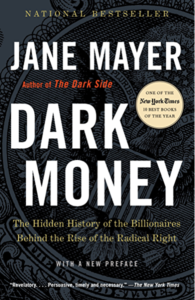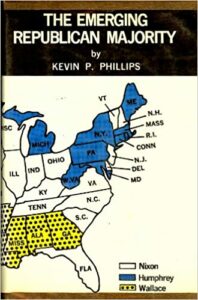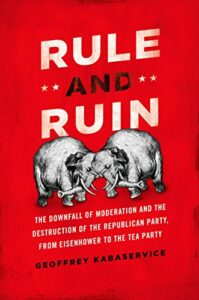
This post begins a bare-bones outline of a few key historical developments that have brought us to where we are now. Anyone with a deep knowledge of U.S. history will find my treatment very basic indeed. I am using as a convenient source a book that sets out a basic overview of selected background developments that led to Trump’s ascendancy, Peter Kivisto‘s The Trump Phenomenon: How the Politics of Populism Won in 2016. (You can read the book online at Scribd. A couple of reviews will give you some idea of what others have seen as its strengths and weaknesses.) I am only selecting a few areas of Kivisto’s discussion in these posts. Developments in the media and political propaganda are most significant but I want deeper preparation before posting on that side of things. A related blog series is Fraser: From Progressive Neoliberalism to Trump; also, America’s Radical Right in Context (Lipset Revisited). I have added hyperlinks copiously for the benefit of anyone (like me) who uses these sorts of outlines as springboards for further reading.
. . .
From World War 2 to the 1960s the two major political parties were both centrist:
| DEMOCRATIC PARTY : Center-Left a coalition of . . . |
REPUBLICAN PARTY : Center-Right a coalition of . . . |
| labour unions | big business and traditional main street conservatives |
| leftists who had moved toward the political center from the New Deal forward | fiscal conservatives, libertarians, and social liberals |
| Southern conservatives — the Dixiecrats | a core of right-wing radicals, during the 1950s associated in particular with the John Birch Society, a virulently anti-communist organization that operated with secret cells and abounding in conspiracy theories about communist penetration of the federal government and other institutions. |
On the John Birch Society:
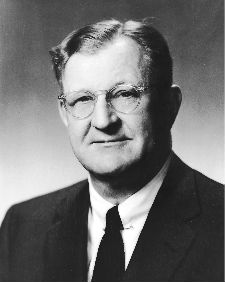 One of the founding members of the Society was Fred Koch, the founder of Koch Industries and the father of Charles and David. Party leaders saw these extremists as a threat to conservatism and undertook campaigns to contain rather than encourage them. Efforts were made, for example by William F. Buckley, to keep the Society’s members in particular and the extremist right in general out of influential roles in the party. However, over the course of several decades, as the success of the brothers Koch attests, the radical right has succeeded in reshaping the party and moving it far from its nineteenth-century roots. The turning point in the party’s remake began in the wake of the tumultuous 1960s — an era in which the combined impact of growing opposition to the Vietnam War, and the counterculture set the stage for what has played out for over a half-century later.
(Kivisto, 88) |
From Johnson’s Great Society to White Nationalism
-
- 1964: the Civil Rights Act
- 1965: the Voting Rights Act
Both passed with bipartisan support. (Democrats controlled both houses of Congress and the legislation was advanced by the Democrat President Lyndon Johnson.) But in each case the Republican Party marshalled a larger percentage of its members in support of each bill than the Democrats did.
Why was there less support for these bills among Democrats? Answer: the Dixiecrat faction in the Democratic Party.
Compare the reactions to the Social Security Amendments Act (1965):
-
- Republicans opposed it because they saw it as “creeping socialism”
- A minority of Democrats also opposed it even though they had supported the idea of social security legislation in the 1930s — then such legislation was deemed of benefit to “their white constituents”.
Despite Republican support for the Civil Rights and Voting Rights Acts, Johnson saw the writing on the wall: the Democratic coalition was about to unravel as the South, a once solidly Democratic region, was about to exit the party. Bill Moyers, then an aide to Johnson, reported that the President told him, “I think we just delivered the South to the Republican Party for a very long time to come” (Moyers, 2004, p. 167).
The unravelling followed. Southern Democrats defected to the Republicans. Republican Richard Nixon implemented the “Southern strategy“:
For its part, the Republican Party opened its arms, with Richard Nixon implementing his “Southern strategy.” In researching a biography of Nixon, John A. Farrell discovered a document in which Nixon, during the 1968 presidential campaign, promised these new arrivals to the party that he “would retreat on civil rights and ‘lay off pro-Negro crap’ if elected” (2017, p. 9).
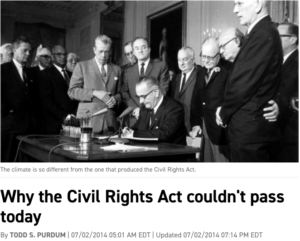
The Republican Party of Lincoln was also sliding into another place:
At the same time, liberal and moderate Republicans elsewhere in the country were confronted with challenges from the right by opponents who were hostile to their centrism and their commitment to civil rights. Thus began what Purdum describes as “the long process by which the Party of Lincoln became the party of white backlash, especially |but not only] in the South” (2014b, p. 3).
Republican strategist Kevin Phillips foresaw the outcome clearly:
-
- Blacks, given the right to vote by the Democratic Party, naturally supported the Democratic Party
- Southern whites responded by flocking to the Republican Party
Also, the shift of the once Democratic South to a solid Republican base was secured . . .
-
- As blacks continued to migrate to Northern states . . .
- . . . Northern whites would migrate south, establishing a strong Republican base in the south.
The 1970s set the stage for the final destruction of a center-right conservative party and the solidification of a reactionary one — a party in which people associated with the former were increasingly condemned by those in the latter camp as being Republicans in Name Only (Kabaservice, 2012).
Into the 1980s . . .
The rise of Ronald Reagan to national prominence . . . in 1980 further signaled this rightward shift. Thus, Reagan launched his 1980 post-convention campaign in Philadelphia, Mississippi, the site of the brutal murder of three civil rights workers in 1964. Far from being there to memorialize their martyrdom, he was there to inform whites that he was on their side, using the coded language of states’ rights. The person who arranged this visit was Republican operative Paul Manafort, who would serve the Trump campaign until his Russian connections made it too problematic for him to continue in that role. His place in Republican politics from Reagan to Trump reflects a white nativism that has, arguably, defined the party ever since the implementation of the Southern strategy. It led to recurrently stoking racial fears and antagonisms, as with Lee Atwater’s Willie Horton (a convicted murderer who went on a crime spree while on furlough) television advertisements on behalf of his boss, George H. W. Bush. (Kivisto, 91f)

The next two historical waves are the emergence of the Christian Right and then the reaction to Barack Obama’s election. Those developments will be discussed next.
Kivisto, Peter. 2017. The Trump Phenomenon: How the Politics of Populism Won in 2016. Bingley, UK: Emerald.

